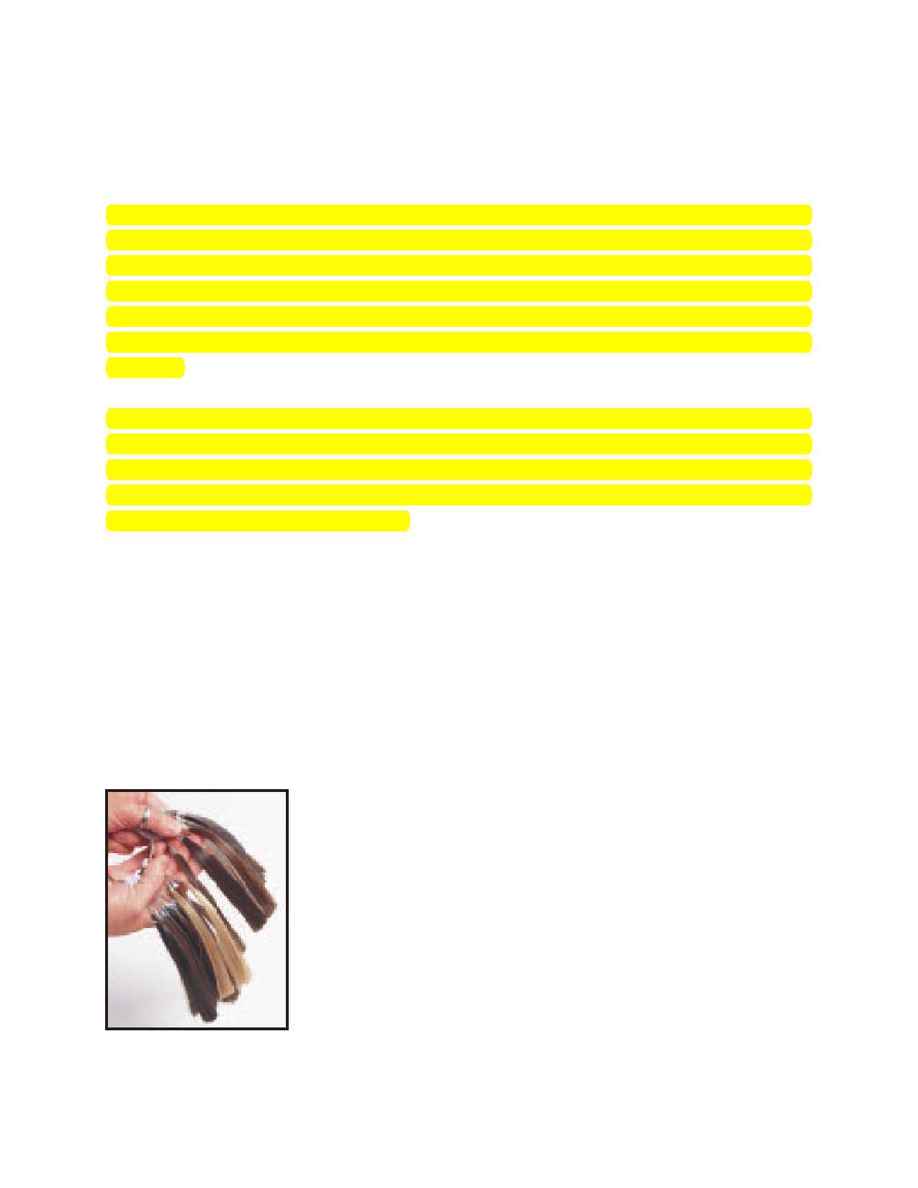
Composition, Colors and Construction
Before performing wig services for your clients, it is important to have a good understanding of the
composition, colors and construction of wigs.
Wig Composition
Hairpieces can be made of human hair, animal hair, synthetic fibers or a blend of each. Asian, Indian
or European hair is generally used to make human hair wigs, European being the most costly. Gen-
erally, hair from India is wavy while hair from Asia is straight. The hair is specially treated to pro-
tect against possible damage from styling services. Since the appearance and texture of human hair-
pieces is the most natural, they are preferred by those wanting a wig to look like their own hair. Since
the supply of human hair for the manufacturing of wigs is more limited, these wigs are the most
expensive.
Modacrylic (synthetic) wig fibers are formulated from petroleum products and are produced as very
long threads (monofilaments), which are then rolled onto spools. These fibers make it very cost
effective and efficient to produce wigs. Shades are almost unlimited, so human hair colors can be
closely duplicated. While modacrylic fibers may not always resemble human hair, modern tech-
nology has produced very realistic results.
If you're not certain whether a hairpiece is made of human hair or modacrylic fiber, pull out sev-
eral strands and hold them over a match flame.
A human hair strand will burn slowly and pro-
duce an odor. A synthetic fiber will either "ball up" on the end (melt) and extinguish itself
or burn very rapidly and produce no odor.
Animal hair wigs and hairpieces, most often made of yak, angora, horse or sheep hair, have even
less resemblance to human hair than modacrylic fibers. Animal hair is most often used to produce
fantasy hairpieces, theatrical wigs or wigs meant to be worn by display mannequins.
Wig Colors
All the colors used for wigs and hairpieces are standardized accord-
ing to the seventy colors on the J and L ring (the standard hair
color ring used by wig and hairpiece manufacturers). The ring
contains numbered samples from black to palest blond. This ring
allows wig manufacturers to select from a variety of colors and to
create special effects such as highlighted hair.
398
SALON FUNDAMENTALS
